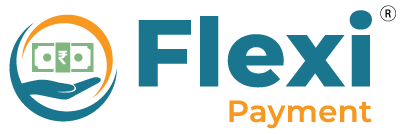Cash flow challenges impact not just businesses selling to customers, but also suppliers waiting for payments. One rising trend is Purchase Invoice Discounting (PID) — a financing tool enabling suppliers to accelerate payments against approved purchase invoices. As more companies adopt embedded finance strategies, PID is becoming a pivotal lever in supply chain financing.
In this article, we’ll cover:
-
- What is Purchase Invoice Discounting and how it differs from typical invoice discounting
-
- Key trends driving PID adoption in 2025
-
- How businesses (both buyers & suppliers) can benefit
-
- Implementation challenges and mitigation
Key Components
ToggleWhat Is Purchase Invoice Discounting?
Purchase Invoice Discounting is a mechanism where a supplier (vendor) sells or pledges a purchase invoice (i.e. an invoice raised on a buyer) to a financier (often via a platform) and receives early payment (typically a discounted amount). The buyer then pays the financier on invoice maturity.
It’s similar to invoice discounting, but with a twist: the focus is on purchase-side invoices (i.e., invoices raised on buyers), often backed by buyer credibility. Some use cases call it “reverse invoice discounting” or “supplier financing backed by buyer credit”.
This approach helps suppliers get liquidity sooner, while buyers may negotiate extended payment terms. It also helps strengthen the supply chain by sharing working capital benefits.
In India and other markets, it’s gaining traction as part of broader supply chain finance ecosystems.
Benefits for Suppliers & Buyers
For Suppliers / Vendors:
-
- Accelerated cash flow and reduced days sales outstanding (DSO)
-
- Reduced credit risk (if financed via non-recourse or backed by buyer)
-
- Better bargaining power with buyers (because liquidity is less strained)
-
- Opportunity to extend business without over-leveraging
For Buyers / Purchasers:
-
- Can negotiate extended credit terms with suppliers
-
- Improve supplier loyalty by offering early payment option
-
- May receive discounts or incentives for early settlement
-
- Strengthen supply chain resilience by giving suppliers financial stability
Risks, Challenges & Mitigation
Challenges:
-
- Creditworthiness of buyers: financier must trust buyers’ ability to pay
-
- Platform & operational integration: ensuring systems and workflows sync
-
- Costs/discount rate: balancing discount offered vs cash cost
-
- Confusion / adoption resistance by suppliers unfamiliar with concept
-
- Dispute / reconciliation issues (if there are supplier or buyer disputes)
Mitigation Strategies:
-
- Use buyer-backed approval and guarantee for purchase invoices
-
- Employ digital platforms with automated reconciliation
-
- Offer hybrid recourse / non-recourse structures depending on risk appetite
-
- Educate suppliers and buyers on clear invoicing / documentation
-
- Start with pilot programs on trusted supplier clusters
Best Practices & Implementation Steps
-
- Buyer Onboarding & Credit Assessment
Ensure buyers are credit-vetted, with a track record of timely payments.
- Buyer Onboarding & Credit Assessment
-
- Integration with ERP / Procurement Systems
Embed PID interface in procurement systems to auto-offer financing when invoices are approved.
- Integration with ERP / Procurement Systems
-
- Define Discount Policies & Rate Bands
Use dynamic discounting models (sliding scale depending on payment timing).
- Define Discount Policies & Rate Bands
-
- Tier Suppliers Strategically
Roll out PID first to critical or high-volume suppliers to build confidence.
- Tier Suppliers Strategically
-
- Liquidity & Fund Management
Ensure that financing is backed by sufficient capital or partner with financiers / NBFCs.
- Liquidity & Fund Management
-
- Monitoring & Analytics
Use data models to predict payment behavior, default risk, and tailor offers accordingly.
- Monitoring & Analytics
Use Cases & Illustrations
-
- Manufacturing Supply Chains: A manufacturer offers PID to key raw-material suppliers. When they submit invoices, a financing platform offers early payment at a small discount; supplier accepts, gets funds, and buyer pays later.
-
- Retail / FMCG: Retail chain backs early payout for distributors & wholesalers using PID to strengthen their liquidity.
-
- Export Supply Chains: An exporter’s buyer (overseas) supports PID in foreign currency; the supplier draws down liquidity early instead of waiting 60–90+ days.
-
- Agriculture Input Suppliers: Agro-suppliers get access to early funds during planting season by discounting purchase invoices for farmers / intermediaries.
Purchase Invoice Discounting is rapidly emerging as a powerful tool that strengthens the entire supply chain. For suppliers, it unlocks liquidity and improves working capital. For buyers, it offers negotiating leverage and supplier loyalty. As embedded finance, dynamic discounting, and ESG linkages mature, PID is poised to become a core element of supply-chain finance strategies in 2025 and beyond.
